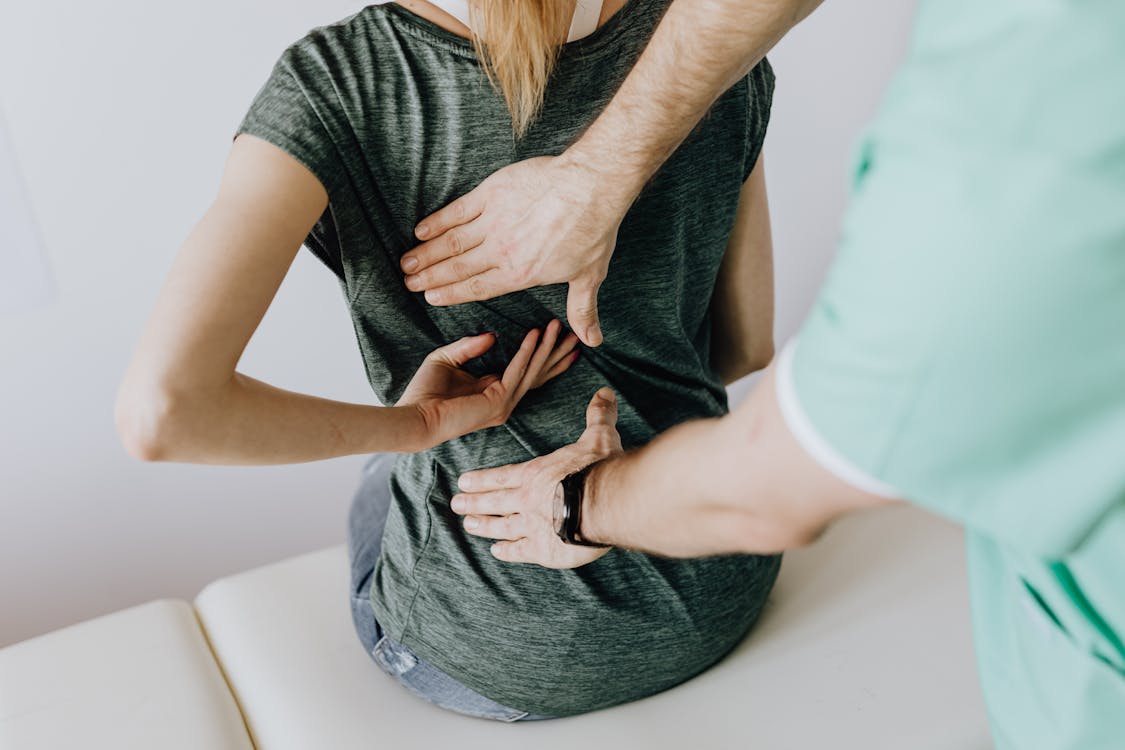10 Ways to Relieve Back Pain
1. Maintaining good posture relieves back pain
Practicing proper posture while sitting, standing, and moving can help alleviate back pain by reducing strain on the spine and supporting muscles. Avoid slouching or slumping, and aim to keep your spine aligned in a neutral position to minimize pressure on the back and prevent discomfort.
2. Exercise regularly to relieve back pain
Engaging in regular physical activity, including exercises that strengthen the core muscles, can help improve back pain by enhancing spinal stability and flexibility. Incorporate activities such as walking, swimming, yoga, or Pilates into your routine to strengthen the muscles that support the spine and reduce the risk of back pain episodes.
Read Also:
Healthy Foods For Keeping Healthy Weight In Winters Cold
3. Proper lifting techniques help in relieving back pain
Using proper lifting techniques can prevent back strain and injury, thereby reducing the risk of back pain. When lifting objects, bend at the knees rather than the waist, keep the back straight, and use the legs to lift while keeping the object close to the body. Avoid twisting the spine while lifting, as this can increase the risk of muscle strain and back pain.

4. Apply heat or cold pads to instantly relieve back pain
Applying heat or cold therapy to the affected area can provide immediate relief from back pain by reducing inflammation, soothing sore muscles, and improving blood flow. Use a heating pad, warm compress, or hot water bottle for chronic or muscle-related back pain, and apply an ice pack or cold compress for acute injuries or inflammation.
5. Over the counter pain relievers help in reducing back pain
Over-the-counter pain medications, such as nonsteroidal anti-inflammatory drugs (NSAIDs) like ibuprofen or acetaminophen, can help alleviate mild to moderate back pain by reducing inflammation and providing pain relief. Follow the recommended dosage instructions and consult with a healthcare professional if you have any underlying medical conditions or concerns.
6. Use ergonomic furniture helps to relieve back pain
Using ergonomic furniture, such as chairs, desks, and mattresses, can help alleviate back pain by providing proper support and alignment for the spine. Choose chairs with adjustable lumbar support, desks with adjustable height settings, and mattresses that contour to your body’s natural curves to reduce pressure on the back and promote better posture.
7. Practice stress management to alleviate back pain
Chronic stress can exacerbate back pain by tensing the muscles and increasing sensitivity to pain. Incorporate stress-reducing techniques such as deep breathing exercises, meditation, yoga, or tai chi into your daily routine to promote relaxation, reduce muscle tension, and alleviate back pain.

8. Maintain a healthy weight to avoid back pain
Excess weight can strain the back and increase the risk of developing back pain and related conditions such as disc herniation and osteoarthritis. Maintain a healthy weight through a balanced diet and regular exercise to reduce the load on the spine and decrease the likelihood of experiencing back pain.
Read Also:
9. Stay active to improve back pain
Remaining sedentary can exacerbate back pain and stiffness by weakening the muscles that support the spine. Stay active by incorporating gentle stretching, low-impact exercises, and regular movement breaks throughout the day to improve flexibility, strengthen muscles, and alleviate back pain.
10. Consider physical therapy to relieve back pain
Physical therapy can be an effective treatment option for chronic or severe back pain, as it focuses on strengthening the muscles, improving flexibility, and restoring function to the spine. A physical therapist can create a personalized exercise program tailored to your specific needs and goals, providing guidance and support throughout your recovery journey.





